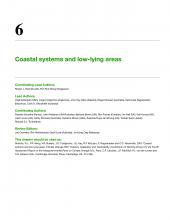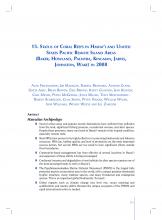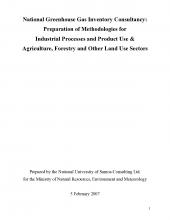Status of coral reefs in Hawai'i and United States Pacific remote island areas (Baker, Howland, Palmyra, Kingman, Jarvis, Johnston, Wake


Climate Change Resilience, Biodiversity Conservation
Available Online
Several urban areas and popular tourist destinations have suffered from pollution from the land, significant fishing pressure, recreational overuse, and alien species. Despite these pressures, many coral reefs in Hawai'i remain in fair to good condition, especially remote reefs; Most MPAs have proven to be highly effective in conserving biodiversity and fisheries resources. MPA size, habitat quality, and level of protection are the most important success factors, but several MPAs are too small to have significant effects outside their boundaries; Community-based management has been effective at several locations in Hawai'i and expansion of these efforts is being encouraged; Continued invasion and degradation of new habitats by alien species remains one of the most pressing threats to reefs in Hawai'i; The Papahanaumokuakea Marine National Monument (PMNM) is the largest fully protected marine conservation area in the world, with a unique predator-dominated trophic structure, many endemic species, and many threatened and endangered species. This is an important global biodiversity 'hot spot'; Global impacts such as climate change (sea level rise, ocean warming and acidification) and marine debris threaten the unique ecosystem of the PMNM, and rapid international action is needed.







